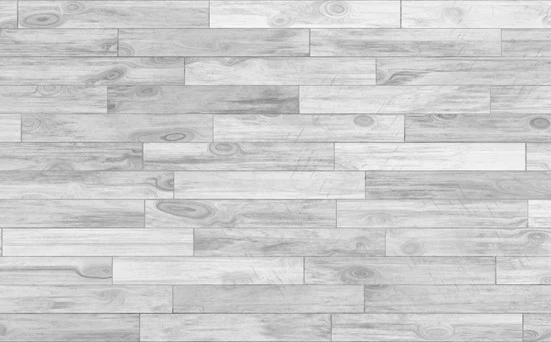So, you’re thinking about upgrading your floors? We get it—the right flooring can totally transform your space, but with so many options out there, it’s easy to feel overwhelmed. When it comes to choosing new flooring for your home, two popular options that often come up are laminate flooring and engineered hardwood. Both materials offer the look of natural wood at a more affordable price point than solid hardwood, but they have distinct differences in composition, durability, appearance, and more. But what’s the real difference, and which one should you pick? Let’s chat about it.
What Exactly is Laminate Flooring?

Laminate flooring is a synthetic flooring product made up of multiple layers. Think of laminate flooring as the modern marvel of the flooring world. It’s all about giving you that wood look without the wood price. Here’s what’s inside:
• Backing layer: Provides stability and moisture resistance
• Core layer: Usually made of high-density fiberboard (HDF)
• Image layer: A high-resolution photograph that mimics the look of wood or stone
• Wear layer: A clear, durable top coat that protects against scratches and wear
Laminate flooring is designed as a floating floor system, meaning the planks click together and aren’t fastened directly to the subfloor. No need for nails or glue! This makes laminate relatively easy to install for DIY enthusiasts.
What’s the Deal with Engineered Hardwood?

Engineered hardwood is made with a real wood veneer that makes it hard to distinguish from solid hardwood—and it’s built to last too. Engineered hardwood flooring consists of several layers as well, but with a key difference:
- Base layers: Multiple layers of plywood or high-density fiberboard
- Core layer: Typically made of a more moisture-resistant wood
- Top layer: A thin veneer of real hardwood
The real wood veneer gives engineered hardwood the authentic look and feel of solid hardwood flooring. Engineered hardwood can be installed as a floating floor or glued/nailed down to the subfloor. Depending on your space, one method might be better than the others, so it’s worth thinking about how you want to install it (or if you want to hire a pro).
Laminate Flooring vs Engineered Hardwood: Key Differences
Now that we’ve covered the basics, let’s dive into a detailed comparison of laminate flooring vs. engineered hardwood across several important factors. How do these two stack up against each other? Well here is Lion’s Pride Flooring thoughts.
1. Appearance
Laminate Flooring:
The image layer is where laminate shines—it can look just like real wood, and sometimes even better because it’s flawless.
- Tons of options when it comes to wood species and colors.
- But, there’s a catch: because it’s a printed image, you might notice repeating patterns if you look closely.
Engineered Hardwood:
This is the real deal—each plank has its own unique grain and character because it’s made from actual wood.
- Fewer wood species to choose from, but the natural variation in the wood is a plus.
- Over time, engineered hardwood can develop a patina, giving your floors a lived-in, authentic look.
Winner: Engineered Hardwood
Let’s be honest, nothing beats the feel of real wood underfoot. While laminate has come a long way in terms of realism, engineered hardwood offers the authentic look and feel of real wood that many homeowners prefer.
2. Durability and Wear Resistance
Laminate Flooring:
- This stuff is tough. The wear layer does a great job of protecting against scratches, dents, and even UV rays.
- The downside? Once it’s damaged, you can’t really fix it. You’ll need to replace the damaged planks.
- Expect it to last 10-25 years if you treat it right.
Engineered Hardwood:
- While it’s more prone to scratches than laminate, the beauty of engineered hardwood is that you can sand it down and refinish it a few times, depending on the veneer thickness.
- With proper care, it can last 30 years or more—longer if you love that worn, vintage look.
Winner: Tie
It’s a close call. Laminate flooring is more resistant to surface damage, but engineered hardwood can be refinished to extend its lifespan.
3. Water Resistance
Laminate Flooring:
- It’s pretty good with water—small spills won’t be a problem if you clean them up quickly.
- But prolonged exposure to moisture can cause the planks to swell or warp.
- Keep it out of bathrooms and basements if you can.
Engineered Hardwood:
- It’s better at handling moisture than solid hardwood, but it’s not immune to water damage.
- Prolonged exposure to water can still cause warping or buckling.
- Some brands offer more water-resistant options, but don’t expect it to be waterproof.
Winner: Laminate Flooring
While neither option is completely waterproof, laminate flooring generally offers better resistance to surface moisture.
4. Installation
Laminate Flooring:
- The click-lock system is a dream for DIYers—no special tools or adhesives needed.
- You can often install it over existing flooring, saving you time and money.
- It’s a weekend project that won’t require you to hire a pro.
Engineered Hardwood:
- Installation is a bit more involved—floating, gluing, or nailing all have their pros and cons.
- You might need to remove existing flooring first.
- If you want a seamless, professional look, it’s worth considering hiring a pro.
Winner: Laminate Flooring
The easy click-lock installation of laminate flooring makes it more accessible for DIY projects and typically faster to install.
5. Cost
Laminate Flooring:
- It’s the budget-friendly choice, with prices typically ranging from $1-$5 per square foot.
- Even if you hire someone to install it, you’re still looking at an affordable option.
Engineered Hardwood:
- More expensive, but less so than solid hardwood. Expect to pay between $3-$14 per square foot.
- Installation costs are higher too, so keep that in mind when budgeting.
Winner: Laminate Flooring
Laminate flooring is typically the more budget-friendly option, especially when factoring in installation costs. If you’re watching your wallet, laminate wins this round.
6. Maintenance and Cleaning
Laminate Flooring:
- Low maintenance and easy to clean—just sweep and damp mop regularly.
- Avoid too much water and definitely no steam cleaning.
- If a plank gets damaged, you’ll need to replace it, which can be tricky if you don’t have extras.
Engineered Hardwood:
- Needs a bit more care—sweep regularly and use wood-specific cleaners.
- Over time, it may need refinishing to keep it looking fresh.
- Minor scratches? No problem, they can often be buffed out.
Winner: Laminate Flooring
The low-maintenance nature of laminate flooring makes it slightly easier to care for on a day-to-day basis.
7. Environmental Impact
Laminate Flooring:
- Mostly made from synthetic materials, though some brands are eco-friendlier than others.
- Not biodegradable, so keep that in mind when it’s time for a change.
Engineered Hardwood:
- Uses real wood, making it a more sustainable choice.
- It’s more resource-efficient than solid hardwood, and at the end of its life, it can be recycled or repurposed.
Winner: Engineered Hardwood
While both options have environmental considerations, engineered hardwood uses more natural and renewable materials.
8. Resale Value
Laminate Flooring:
- Doesn’t add a ton of value to your home, but it’s a good option if you’re renting out a property or just need something that looks good on a budget.
- Some buyers might see it as a lower-end option, but it’s still a step up from older carpet or vinyl.
Engineered Hardwood:
- Adds more value to your home and appeals to a wider range of buyers.
- It’s seen as a higher-end option, so if you’re thinking about selling in the future, this might be the better investment.
Winner: Engineered Hardwood
For long-term value, engineered hardwood is the clear winner. The real wood construction and higher-end perception of engineered hardwood typically translates to better resale value. All that said, we still recommend you seek a realtor’s guidance on this one as they are the expert on that field.
Making the Right Choice: Laminate Flooring vs. Engineered Hardwood
So, where does that leave you? When deciding between laminate flooring vs. engineered hardwood, here are a few final thoughts to help you decide:
• Budget: If cost is a primary concern, laminate flooring is generally the more affordable option.
• Location: For moisture-prone areas, laminate may be a better choice, while engineered hardwood is suitable for most other living spaces.
• DIY vs. Professional Installation: Laminate flooring is easier if you’re handy and want to do it for yourself, while engineered hardwood often benefits from professional installation.
• Longevity: Engineered hardwood has the potential to last longer and can be refreshed with refinishing, making it a better choice for the long haul.
• Authenticity: If the look and feel of real wood is important to you, engineered hardwood is the clear winner.
• Maintenance: Consider your willingness to perform regular maintenance and potential refinishing when choosing between the two options.
The Best Kind of Flooring Depends on You!
Both laminate flooring and engineered hardwood offer attractive alternatives to solid hardwood flooring, each with its own set of advantages. Laminate is durable, budget-friendly, and a breeze to install, making it perfect for busy households or those looking to save some cash. Engineered hardwood, while pricier, gives you that real wood feel and can boost your home’s value in the long run. Ultimately, the choice between laminate flooring vs. engineered hardwood will depend on your specific needs, preferences, and budget. Hopefully, this guide has given you some clarity to make a decision you’ll be happy with for years to come.


